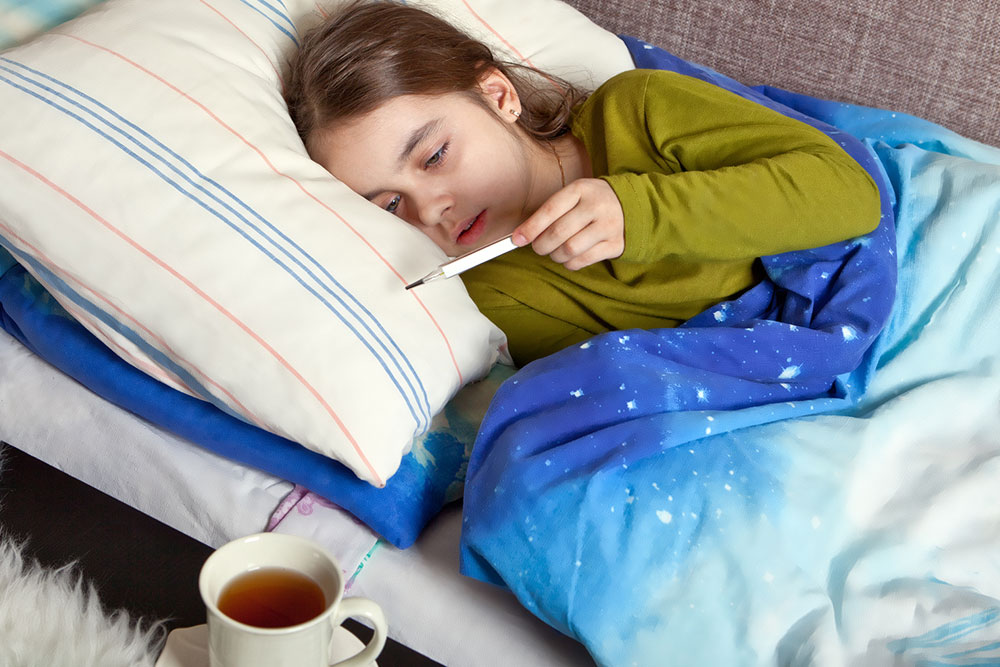Comprehensive Guide to Understanding and Managing Fever Readings
This comprehensive guide explores how to accurately measure and interpret fever readings in both children and adults. It discusses various measurement methods, conversion charts for Fahrenheit and Celsius, and provides tips for effectively managing fever symptoms. Emphasizing the importance of timely medical attention for infants and persistent fevers, the article aims to equip readers with essential knowledge for maintaining optimal health and recognizing when to seek professional help.

In-Depth Guide to Interpreting Fever Measurements and Effective Management
Maintaining a normal body temperature is vital for overall health, and understanding what constitutes a fever is essential for timely and appropriate response. The typical human body temperature is around 98.6°F (37°C), but it can naturally vary within a range of approximately 97°F to 99°F (36.1°C to 37.2°C) depending on factors such as age, activity level, and time of day. A temperature higher than this baseline generally indicates fever, which is often a sign that the body is fighting an infection or inflammation. However, not all fevers are cause for immediate concern, but recognizing the signs and understanding how to interpret thermometer readings is crucial for proper health management.
Accurate measurement of body temperature is essential for assessing health status properly. Different methods are used to measure body temperature, such as oral, rectal, ear (tympanic), forehead (temporal artery), and axillary (armpit) methods. The choice of method can influence the reading and its interpretation, so it is important to be consistent and use correct technique. Here’s a comprehensive guide to interpreting various readings:
Oral temperature readings of 99.5°F (37.5°C) to 99.9°F (37.7°C) generally correspond to ear measurements of 100.4°F (38°C) to 101°F (38.3°C).
When oral temperatures reach 100°F (37.8°C) to 101.5°F (38.6°C), ear readings typically fall between 101.1°F (38.4°C) and 102.4°F (39.1°C).
An oral temperature of 101.6°F (38.7°C) to 102.4°F (39.1°C) correlates with ear measurements of 102.5°F (39.2°C) to 103.5°F (39.7°C).
High fever ranges, such as 102.5°F (39.2°C) to 103.5°F (39.7°C) orally, are approximately equivalent to 103.6°F (39.8°C) to 104.6°F (40.3°C) via ear.
Very high fevers of 103.6°F (39.8°C) to 104.6°F (40.3°C) orally correspond to 104.7°F (40.4°C) to 105.6°F (40.9°C) in ear measurements.
Similarly, for Celsius measurements:
An oral temperature of 37.5°C (99.5°F) to 37.7°C (99.9°F) aligns with ear temperatures of 38°C (100.4°F) to 38.3°C (100.9°F).
Temperatures of 37.8°C (100°F) to 38.5°C (101.3°F) orally match ear readings of 38.4°C (101.1°F) to 39.1°C (102.4°F).
Further, oral readings of 38.6°C (101.5°F) to 39.1°C (102.4°F) correspond to 39.2°C (102.6°F) to 39.7°C (103.5°F) in the ear.
High fever ranges such as 39.2°C (102.6°F) to 39.7°C (103.5°F) orally are comparable to ear temperatures of 39.8°C (103.6°F) to 40.3°C (104.5°F).
Extremely high temperatures, including 39.8°C (103.6°F) to 40.3°C (104.5°F) orally, indicate ear measurements of roughly 40.4°C (104.7°F) to 40.9°C (105.6°F).
Understanding whether a fever is mild, moderate, or high depends on these numerical thresholds. When taking measurements, always note the method used and communicate these details to your healthcare provider for precise evaluation.In pediatric cases, fever thresholds differ slightly. In children, an ear temperature of 100.4°F (38°C) or higher typically indicates fever. Correspondingly, oral readings would be approximately 99.5°F (37.5°C). These thresholds are important because children’s immune responses can vary, and early detection of fever can help prevent complications. It's equally important to note that if your child under three months old develops a fever, immediate medical attention is necessary—fever in very young infants can signal serious underlying conditions.
Additional symptoms accompanying a fever, such as severe headache, neck stiffness, persistent vomiting, diarrhea, irritability, or lethargy, may indicate more serious health issues and require urgent medical consultation. These signs warrant immediate evaluation by healthcare professionals to determine the underlying cause and appropriate treatment.
Managing fever in children involves a combination of medication, hydration, and comfort measures. Over-the-counter medications like liquid Ibuprofen (e.g., Advil, Motrin) are commonly used, with dosage tailored to the child's age and weight. It is essential to avoid giving Ibuprofen to children under six months and aspirin to children under 18 years of age, due to potential side effects.
Alongside medication, ensuring your child remains well-hydrated by offering fluids frequently is crucial. Rest and light clothing or light covers instead of heavy blankets help regulate temperature. Monitoring the fever periodically and noting any changes is vital. If a child's fever persists beyond 24 hours, or if they develop additional concerning symptoms, consulting a healthcare professional promptly is necessary to rule out more serious infections or conditions.





